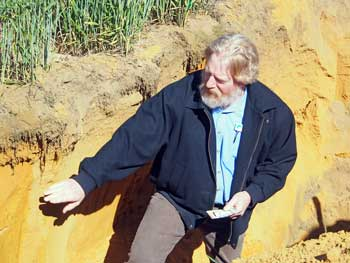A review of soil acidity research over two decades has delivered the most comprehensive picture yet of long-term production benefits from liming in Western Australia.
Department of Agriculture and Food senior researcher Chris Gazey said a review of 69 small plot and large scale lime trials run across the Wheatbelt showed on average a 12 per cent increase in crop yields.
“Crop and soil measurements and analyses from long-term lime trials clearly demonstrate the benefits of managing soil pH,” Mr Gazey said.
“Results did vary significantly, depending on the severity and depth of soil acidity and the extent to which liming ameliorated the constraint.
“By knowing more about individual circumstances, such as soil pH to depth, the sensitivity of the crop or pasture species to low pH conditions, and the current yields compared to yield potential, better estimates of the likely response to managing acidity can be made.”
The results of the study will be presented at next week’s Agribusiness Crop Updates, held in Perth on 24-25 February.
Soils acidity continues to be a major constraint in Western Australia, estimated to cost $500 million each year in lost productivity.
“Management of soil acidity should not be viewed as an encumbrance, but as an opportunity to improve yield potential and resilience of cropping systems by enhancing the capacity of the soil to store and supply water nutrients.
“Evidence for factors affecting soil and crop response to liming comes from data collected between 1991 and 2012 from trials of varying duration with treatments including rates and timing of lime application(s), lime sources and placement and mixing of lime in the soil profile by ripping.
“Data was organised so that there were 232 data points to compare yield at zero lime, minimum yield, maximum yield, pH at zero lime and pH at maximum lime.
“Soil pH was generally measured at 0–10cm, 10–20cm, 20–30cm and 30–40cm depth; soils were classified as acidic if pHCa was below 4.5.
“The average gain from liming considering all years and all crops in the database was 0.18t/ha or 10 per cent increase in yield.
“However, if the first year of lime and the first year after liming are removed from the data (on the understanding that lime takes time to react in the soil and responses in the first two years are not expected) there is an average 0.25 t/ha or 12 per cent increase in yield.”
Mr Gazey said the data were similar to most other trials around Australia, although higher responses were found in trials which combined lime application and ripping.
“Soil analysis to diagnose soil acidity is important as yield gains from liming will depend on whether the paddock yield is already close to potential and what other constraints may exist beyond soil pH,” he said.
Mr Gazey added that he had been surprised that the impacts of lime applied at differing rates 20 years ago on trials at Mingenew could be clearly seen from the air as distinct lines in crop growth.

Media contacts: Jodie Thomson, media liaison +61 (0)8 9368 3937
The 2014 Agribusiness Crop Updates is presented by the Grain Industry Association of WA (GIWA) on behalf of DAFWA and the Grains Research and Development Corporation. For more information visit the GIWA website giwa.org.au
